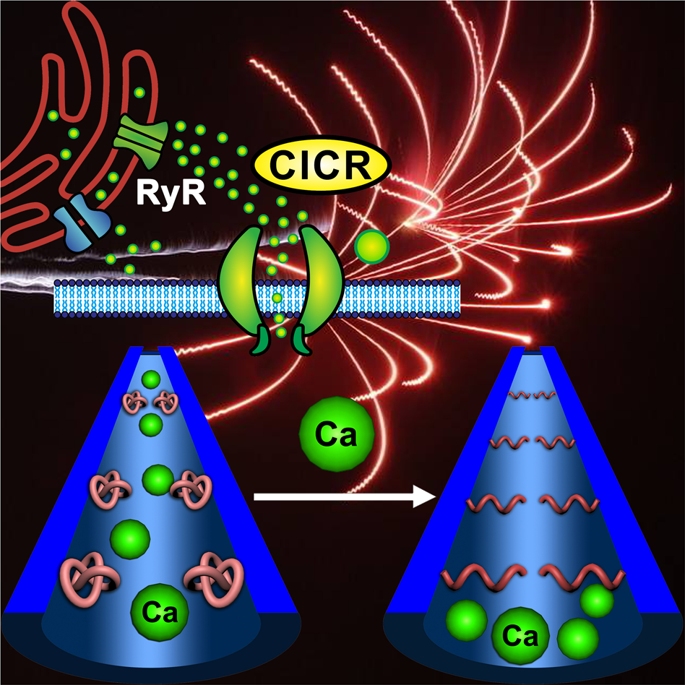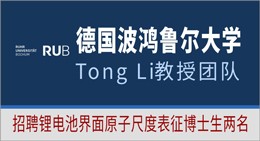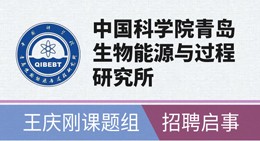NPG Asia Materials ( IF 8.6 ) Pub Date : 2019-08-30 , DOI: 10.1038/s41427-019-0148-4
Yunlong Li , Yuting Xiong , Dongdong Wang , Xiuling Li , Zhixiang Chen , Cunli Wang , Haijuan Qin , Jinxuan Liu , Baisong Chang , Guangyan Qing

|
Abstract
In nature, ion channels play key roles in controlling ion transport between cells and their surroundings. Calcium ion (Ca2+)-induced Ca2+ release (CICR), a critical control mechanism for Ca2+ channels, occurs due to a Ca2+ concentration gradient working in synergy with ryanodine receptors, which are famously known as “calcium sparks”. Inspired by this self-regulated biological process, a smart Ca2+ concentration-modulated nanochannel system was developed by integrating a poly{N-isopropylacrylamide-co-acrylamide-[4-(trifluoromethyl) phenyl]-2-thiourea0.2-co-acrylamide-DDDEEKC0.2} (denoted as PNI-co-CF3-PT0.2-co-DDDEEKC0.2) three-component copolymer onto the nanochannels of a porous anodic alumina (PAA) membrane. In this smart polymer design, the DDDEEKC hepta-peptide unit has an extraordinary binding affinity with Ca2+ through coordination bonds, while CF3-PT functions as a hydrogen bond mediation unit, facilitating the remarkable conformational transition of the PNI main chain in response to Ca2+-specific adsorption. Due to these futures, the dynamic gating behaviors of the modified nanochannels could be precisely manipulated by the Ca2+ concentration. In addition, the sensitive Ca2+ response, as low as 10 pM with a high specificity toward Ca2+ capable of discriminating Ca2+ from other potential interference metal ions (e.g., K+, Cu2+, Mg2+, Zn2+, Fe3+, and Al3+), remarkable morphological change in the nanochannel and satisfactory reversibility indicate the great potential of Ca2+-responsive polymers for the fabrication of biodevices and artificial nanochannels.
中文翻译:

通过模仿生物Ca 2+诱导的Ca 2+释放过程,基于聚合物的智能钙离子自调节纳米通道
抽象的
实际上,离子通道在控制细胞及其周围环境之间的离子迁移中起关键作用。钙离子(Ca 2+)诱导的Ca 2+释放(CICR),是Ca 2+通道的关键控制机制,是由于Ca 2+浓度梯度与雷诺丹碱受体协同作用而发生的,众所周知,莱诺丁碱受体被称为“钙”。火花”。通过这种自我调节的生物学过程的启发,智能的Ca 2+浓度调制纳米通道系统是由集成一个聚{开发Ñ -isopropylacrylamide-共-acrylamide- [4-(三氟甲基)苯基] -2-硫脲0.2 -共-丙烯酰胺-DDDEEKC 0.2}(表示为PNI- co -CF 3 -PT 0.2 - co -DDDEEKC 0.2)三组分共聚物在多孔阳极氧化铝(PAA)膜的纳米通道上。在这种智能聚合物设计中,DDDEEKC七肽单元通过配位键与Ca 2+具有非凡的结合亲和力,而CF 3 -PT则充当氢键介导单元,促进了PNI主链在响应中显着的构象转变对Ca 2+的特异性吸附。由于这些未来,修饰的纳米通道的动态门控行为可以被Ca 2+精确控制。专注。此外,敏感的Ca 2+响应低至10 pM,对Ca 2+具有高特异性,能够将Ca 2+与其他潜在的干扰金属离子(例如K +,Cu 2 +,Mg 2 +,Zn 2+,Fe 3+和Al 3+),纳米通道中的显着形态变化和令人满意的可逆性表明,Ca 2+响应聚合物在制造生物装置和人工纳米通道方面具有巨大潜力。































 京公网安备 11010802027423号
京公网安备 11010802027423号